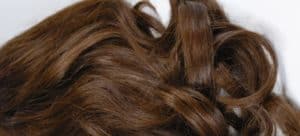The first step in the hair replacement process is choosing the best system for the coverage needed. However, since different types of hair replacement options such as a “wig,” “hair piece,” and “toupee” are often used interchangeably, it can be difficult to tell the difference between them and even harder to know which system may be best for you. Here is a brief explanation of three common hair replacement systems, as well as the coverage each is designed to provide.
Wig: One of the oldest hair replacement systems, evidence of wig wearing dates back several centuries and can be seen in artifacts recovered from ancient Egypt, Greece and Rome. While wigs/wiglets have evolved since then, the concept of a wig being made of real (human or animal) or artificial hair and intended to cover the entire scalp has stayed relatively static.
Typically wigs are removed each night by the wearer and not worn during certain activities such as bathing. Wigs are also often used as part of a costume and several famous actors, musicians, athletes and other celebrities such as Britney Spears, Andre Agassi, Lady Gaga, Nicki Minaj and Cher have popularized the wearing of wigs for both theatrical or everyday purposes.

Hair piece: In contrast to a wig/wiglet, hair pieces are designed for various kinds of coverage. Hair extensions, toupees, head-wraps, and bangs are all types of hair pieces. The coverage of a hair piece depends on your needs. For instance, Complete Image Clinic offers hair pieces that are customized to each client and can fill in thinning hair or cover an entire scalp.
Whereas a wig usually is taken off at night and during other activities by the wearer, a hair piece can be crafted to be more durable, allowing it to stay on while sleeping, showering, exercising, etc. Wearers of these kinds of hair pieces, such as those provided by Complete Image Clinic, typically do not remove it themselves, and instead return to the provider for adjustments and touch-up’s as needed.
Toupee: A toupee is a type of hair piece intended to cover baldness on the top of the head. This partial hair piece is usually held in place with two-sided special tape or liquid toupee glue and blends with existing hair on the sides and back of the head. Typically men use toupees more than women, due to the coverage needed for male pattern baldness.
